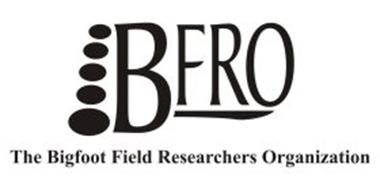What is the bigfoot field researchers organization? There are many organizations that study Bigfoot. The Bigfoot Field Researchers Organization (BFRO) is one of the most well-known. Founded in 1995 by researcher Matt Moneymaker, it has more than 2,000 members and investigates claims of Bigfoot sightings around the world as well as creating a database to track these reports. The organization currently has chapters in twenty-seven states and three countries across the world: Canada, Australia, and England.
Each chapter has unpaid members who investigate Bigfoot
sightings. The organization also has a professional staff, including a director
(Matt Moneymaker), a technical adviser, and field researchers. Why are there so
many organizations that study Bigfoot? The need to study Bigfoot existed long
before the BFRO was founded. Many organizations were created over the years,
each with its own mission statement and purpose. Some groups focused on
eyewitness accounts and others on proving its existence scientifically. All
these factors created different approaches to the same question: What is
Bigfoot? No two people interested in studying Bigfoot are necessarily studying
the same thing, yet all of them fall under the category of bigfoot research.
Each organization has its own unique angle or way of
investigating the creature. For example, some groups focus on examining
footprints and recording audio from possible vocalizations. This information is
then shared with the public to create awareness about Bigfoot or prove its
existence to skeptics. Other groups go directly to where people have reported
seeing Bigfoot and try to capture it for study. Some organizations even try a
combination of the two strategies. Where is this information found? There are
many different sources of information available to those who want to study
Bigfoot. The BFRO database keeps records of sightings worldwide; more than
3,000 reports are included in their database.
Most researchers use either of these two types of online
resources: The Bigfoot Field Researchers Organization (BFRO) Photograph
Directory, or the International Congress on Cryptozoology. Both contain
hundreds of photos and reports about sightings worldwide. In addition, these
websites have been known to share photos and other information between them
over the internet. Are there other groups that study Bigfoot? Of course, there
are. There are any number of individuals and organizations who study Bigfoot
for various reasons, ranging from entertainment to scientific discovery. What
are the most important goals of bigfoot field researcher’s organization? The
BFRO wants to educate people about bigfoot through their research and
investigation tasks, so they can become better equipped to recognize it when
they see it.
The BFRO conducts interviews with witnesses who have claimed to see a Bigfoot to determine veracity of their report. It creates maps showing areas where sightings have been reported or where there are clusters of sightings that may be worth further consideration... The BFRO also examines historical records of Bigfoot sightings. The BFRO issues a newsletter, sometimes known as "The Track Record". It contains reports on ongoing research projects, personal sightings, interviews with researchers and individuals who have had sighting experiences.The organization also has a “Citizen Science” program, where any member of the public can submit their own sighting reports for personal use by the organization.
- The Bigfoot Field Researchers Organization was founded in 1995 by researcher Matt Moneymaker.
- The BFRO is a membership-based organization, with thousands of members in the United States, Canada, Australia, and England.
- The BFRO currently has 26 chapters and reports hundreds of sightings each year.
- There are many different quality Bigfoot sightings each year, including hundreds of footprints and hair samples on file for study.
- Unexplained sounds are also reported to be heard by research teams in the backcountry throughout the United States and Canada as well as in New Zealand and Japan.

No comments:
Post a Comment